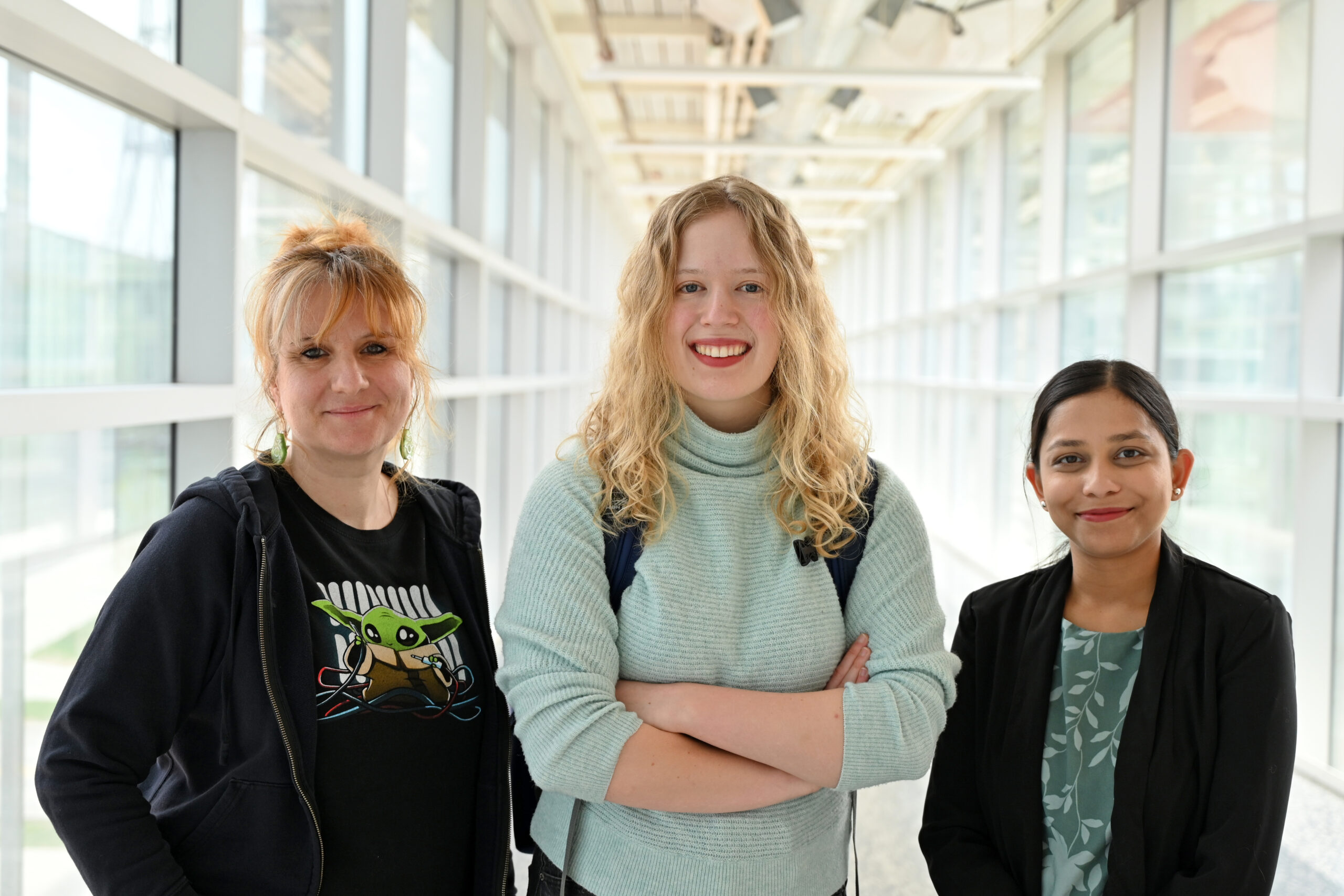Strong mentorship and hands-on learning helped Sarah Stewart turn her dream into reality at Iowa State
Author: Lani McKinney

Author: Lani McKinney

Sarah Stewart dreamed big at an early age. “I had planned on being a mechanical engineer since middle school, as it was my dream to work at NASA,” she says.
Iowa State’s strength in engineering and space programs influenced her decision to become a Cyclone. “By going to Iowa State, I was immediately able to work on hands-on projects I was passionate about through classwork, student organizations and research opportunities.”
One of Sarah’s (pictured above, center) first engineering classes was with mechanical engineering associate teaching professor Paola Pittoni (pictured above, left). “Through her classes, I saw how I could use my knowledge and skills to solve real-world problems and have fun,” she says, “The skills I learned were some of the most important ones I needed as an engineer.”
Pittoni, known by many students for her enthusiasm, passion for STEM and ability to relate to students, taught Sarah’s ME 1700: Engineering Graphics and Introductory Design course. “I will never forget my experience learning how to use Computer-Aided Design software to design lightsabers in Dr. Pittoni’s class,” she says. Class designs were printed by the 3D printing student organization on campus at the time. “I still have mine. It reminds me how awesome it is to see a design go from the computer to a real prototype.”
It wasn’t just lightsabers Sarah was designing, though. She also joined the Make to Innovate (M:2:I) project class during her freshman year — “one of the best decisions I made as an undergraduate.”
As Operations Team Lead for a lunar astronaut tool design team, Sarah’s team engineered a geologic sample bag dispenser for astronauts to store lunar rock samples in for the NASA Micro-g NExT student challenge during her first year.
In the team’s second year, they designed a lunar reusable surface anchoring device. “My contributions helped our team get selected to test our prototype designs in simulated microgravity at the Johnson Space Center. The program helped me make connections in the space industry and solidified my desire and confidence to be an engineer.”
Majoring in mechanical engineering allowed Sarah to get experience in a broad range of disciplines: “I have a great interest in biomedical engineering and renewable energy projects in addition to my work with spacecraft.”
While at Iowa State, Sarah had six internships. Four were at NASA in spacecraft thermal design, lunar dust mitigation, systems engineering, flight operations and structural component design for an astrophysics telescope. She also had an internship at the U.S. Naval Research Laboratory in Washington D.C. working on biomedical device research.
Most recently, she completed an internship at the Hamburg University of Technology in Germany modeling ocean wave energy converters. “Getting accepted into the NASA internship program was a goal I had set in high school. Through dedication to my studies, I was able to turn this dream into reality!”
For Sarah, her greatest accomplishment, though, was completing her Iowa State Honors Program research project and final report on a novel method for the computational modeling of heart valve mechanics to better understand congenital heart defects. This was done in the Computational Modeling and Image Analysis Lab under the mentorship of William March Scholar in Mechanical Engineering and mechanical engineering assistant professor Aishwarya Pawar (pictured above, right).
“Dr. Pawar was an excellent ME 3450: Engineering Dynamics course instructor in addition to being my honors project research advisor. I could not have been successful without her guidance.”
Through her internships and study abroad semester in Ireland, Sarah lived in many places across the country and abroad and connected with dozens of engineers and scientists. “It’s awesome being a part of a vast network around the globe developing new innovations in industry, government and academia each day.”
Sarah will be an aerospace engineer at the NASA Langley Research Center in Virginia working on space mission analysis after graduation.
“In the future, we could send humans to Mars, better treat chronic diseases and power our communities more sustainably. These are all realities I aim to make possible as an engineer.”
